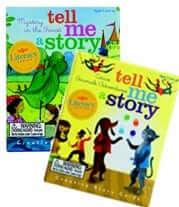With all the social media frenzy these days, it’s hard to focus at times on what really matters: relationships, not likes, social mentions, or tweets.
Businesses still speak the language of positive customer outcomes: we measure revenues, customer lifetime value, loyalty, customer retention, referrals, advocacy and acquisition. All these “business” results come from growing and deepening customer connections.
That means growing a human element in order to scale relationships. That’s why every executive and business owner today is a Chief Relationship Officer.
Return on Relationships Means Effectiveness, Not Just Efficiency
Scaling relationships, then, means scaling “people,” not just technology. We often sacrifice effectiveness for efficiency. Relationships cannot be nurtured through automation alone.
Customers and prospects don’t want to have interactions with marketing; they want interactions with internal experts who help solve business challenges. Most content has traditionally flowed through the bottleneck of marketing where it is sanitized, interpreted, and messaged. Yes, marketing can add value. However, marketing often trades effectiveness for efficiency. And that content flow is rapidly changing, because the buyer’s journey has changed. The most important question to ask today is, “How can we enhance our customer relationships?”
Here are two incredibly effective and powerful ways to scale the human element in order to strengthen customer relationships:
-
Inside the company — Empower employees to engage with customers.
-
Outside the company — Unleash your loyal customer advocates to carry your torch.
Scale People Inside
Letting go and empowering people requires big corporate values like trust. IBM, as an example, has more internal bloggers, advocates, and employee champions having conversations in real-time with customers than other company in the world. I spoke recently with IBM’s Manager of Enterprise Social Strategy & Programs, Susan Emerick, and she mentioned that in some cases (according to company metrics) employee advocates who blog and talk to customers directly during and after the purchasing cycle (most of them outside of marketing – internal subject matter experts) brought seven times more value to customer relationships with their real-time content and human conversations.
Go beyond the expected. Show an outrageous commitment to service. Automating posts, for example, is the wrong kind of scale, and now Google and Facebook are punishing the rankings of automated posts. Automated posts aren’t bad, but when the majority of posts lack real-time interaction, you are missing the chance to build trust through real-time conversation. Direct human engagement matters.
Lower the Marketing Firewall
The best storytellers are often not in the c-suite or marketing suite — they’re the creators, curators, developers, innovators, and service people on the front customer lines. If you are not unleashing your best people – with some healthy social media guidelines – you are not using your full storytelling capacity. A truly social business recognizes that employee relationships with customers are often the reason customers are loyal. Yes, it can work the other way, too. Business has been, and always will be, about people.
We need efficiency and effectiveness. While technology is a great enabler that allows marketers to listen, analyze, and figure out how and where to deploy content, it’s people who make content, service, and interactions effective. Zappos, for example, doesn’t reward customer service personnel for reducing call times. Instead, they are rewarded for making customers happy. That’s effectiveness that increases loyalty and revenues. The longest recorded customer call for the company’s customer service (with breaks) was 10 hours! Efficient? No. Effective? Hell yes. Customers love Zappos and its loyalty and referral rates are exponential.
Scale People Outside
Advocates are passionate, unpaid (this is key), vocal fans who share their stories about you and your company out of dedication and loyalty. They are your best external marketing champions because they scale with word-of-mouth. McKinsey reports that two-thirds of the world’s economy runs on word-of-mouth and word-of-mouth today is valued 50 percent higher than in the 1970s. Customers are doing their own searches. According to Forrester (Oct 2012), buyers are often 67 to 90% through the buying decision-making process before they contact the company for information. During those self-directed searches, they are learning about your company from the loudest voices – both good and bad. From the prospect perspective, advocates are viewed as “people like me” and trusted far more than company spokespeople and media influencers.
Advocates also tend to refer five times (Forrester) more customers on average than their non-advocate counterparts. A great example is Starbucks Melody, a Seattle-based lawyer who loves Starbucks and talks about the company passionately to her tens of thousands of listeners. Gather enough advocates just like her, give them freedom to tell the stories their way, and you’ll galvanize conversations among customers and prospects. Engage, empower, and catalyze your advocates with great content. Being human, having fun, sharing great stories, surprising customers, and creating extreme utility (value) are reasons for customers to talk about you.
Stories Catalyze and Scale
Before you mobilize advocates, you need your core purpose story. Stories are the shareable amino acids of your brand. Too often, businesses spend more time communicating facts and services, rather than talking about who we are and what we stand for. These stories are critical because they enable your best customers to refer you and to champion your cause. For example, JetBlue’s core purpose is to “bring umanity back to air travel.” The company does very little advertising and it doesn’t need to; most of its marketing comes from word-of-mouth. Every part of the experience (including the customer stories and the larger company narrative) is conversation-worthy. That’s differentiated “referral fuel.”
Great stories scale in reach, and in number of shares and speed, or velocity. When this happens, your marketing efforts get that boost. Forget viral; worry instead about engaging your core audience in a meaningful way and they will carry the torch for you.
Chief Relationship Officers Build Scalable Human Brands
The human element matters in marketing and messaging, in our stories and content. It also means being human in our products, services, and customer experiences – that is how a human brand — and how customer relationships — are built. Scaling relationships involves scaling “people” – that precious human element.
Are you scaling people inside and outside of your company to build better experiences and relationships? You should be. Today, every owner and executive is a Chief Relationship Officer.
Kathy Klotz-Guest is CEO of marketing and communications firm, Keeping It Human. She uses improvisation and storytelling skills to help executive teams succeed by using human-speak, a language customers trust. When she’s not kicking jargon’s butt, Kathy blogs, speaks on marketing, and produces podcasts. She practices improvisational comedy on Sundays. Her favorite audience is still her little dude, Evan.





